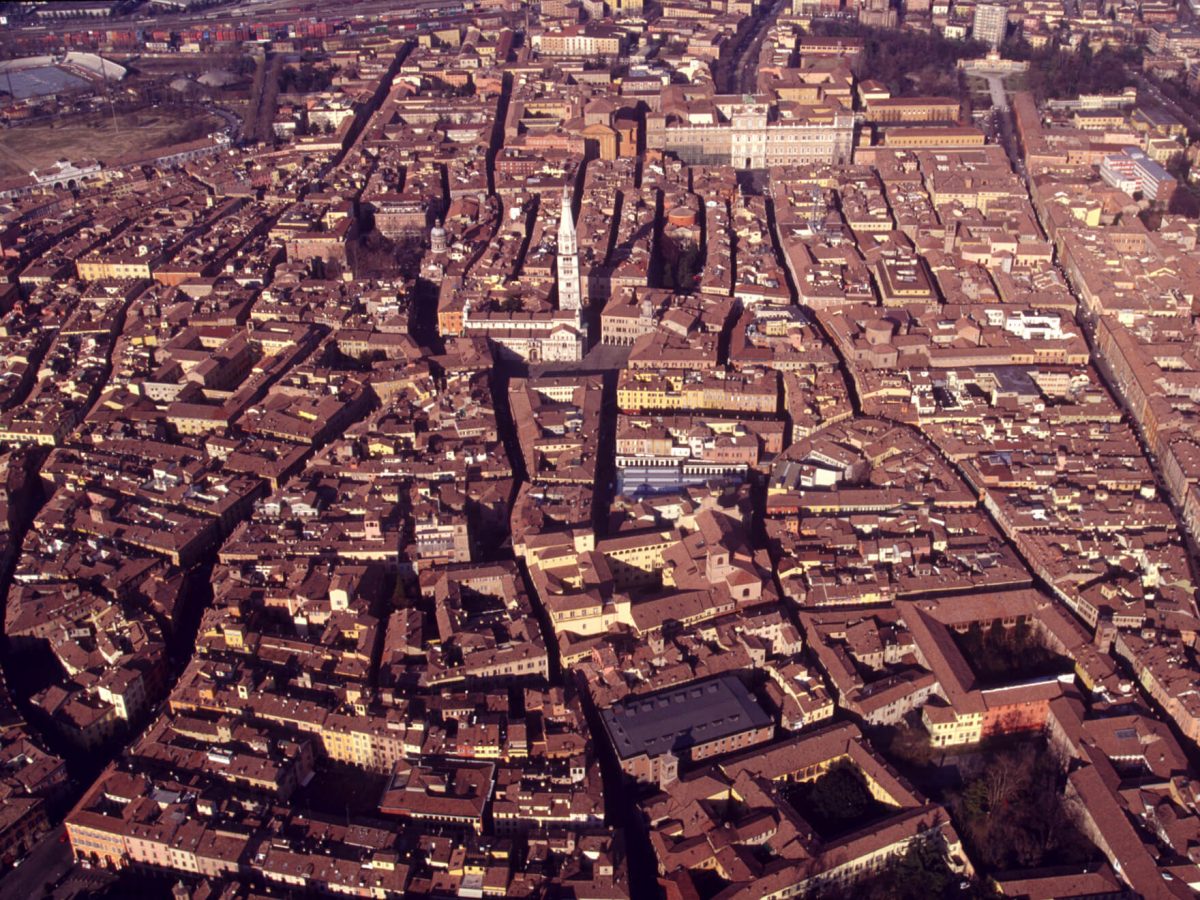Together Modena’s magnificent 12th century cathedral and soaring bell tower serve as a supreme example of early Romanesque art comprised of exceptional architectural and sculptural quality. In addition to the cathedral and spectacular civic tower, also known as “Ghirlandina”, the property includes the Piazza Grande surrounded by the City Hall, and the Archishopric and a part of the canonical buildings and the sacristry to the north. The entire property is relatively small, covering 1.2 ha surrounded by a buffer zone of 1.1 ha.
Attributed to the architect Lanfranco, the cathedral was begun in 1099, replacing an early Christian basilica, and is the home of the mortal remains of Saint Geminiano, the patron saint of Modena (4th century). The building is covered with ancient roman stones, linking it to the splendour of the temples of antiquity. Wiligelmo’s rich sculptures are found on both external walls and the interior capitals. The bell tower, started in the beginning of the 12th century, is of similar style and materials. Originally a five-storey structure, it was completed in 1319 with an octagonal section and additional decoration. The Piazza Grande, located along the historic Via Emilia in the medieval centre of town, was founded in the second half of the 12th century.
The cathedral and the “Ghirlandina” tower appear as a consistent complex in terms of material and structural criteria, and the construction of the two buildings kept the city of Modena busy for over two centuries, from 1099 to 1319. The rebuilding of Modena cathedral in 1099 is a key landmark in medieval history for many reasons, of which two are of most importance. First, the building is a characteristic and documented example of the reuse of ancient remains, which was common practice in the Middle Ages before the quarries were reopened in the 12th and particularly the 13th centuries. Secondly, at the turn of the 11th and 12th centuries, this was one of the first buildings, and certainly the most important one, where collaboration between an architect (Lanfranco) and a sculptor (Wiligelmo) has been documented by explicit inscriptions, found in the building. It also marked the shift from a conception of artistic production emphasizing the quality of the buildings as a masterpiece of the munificence of its founder, to a more modern concept in which the role of the creator is recognised.
Later, the documented presence of the Campionesi masters in Modena between the last decades of the 12th and the early 13th centuries provides a great deal of information about how the works were managed in a perfectly organised medieval construction site. The art of the cathedral and the tower developed considerably under the influence of the Campionesi, always taking into account progress and themes of the post-Wiligelmo Emilian Romanesque School (especially the cathedrals at Ferrara and Piacenza) and innovations of Benedetto Antelami, and shows interesting resemblances with contemporary sculpture of Provence, particularly the superb facades of Saint Gilles and Arles.


